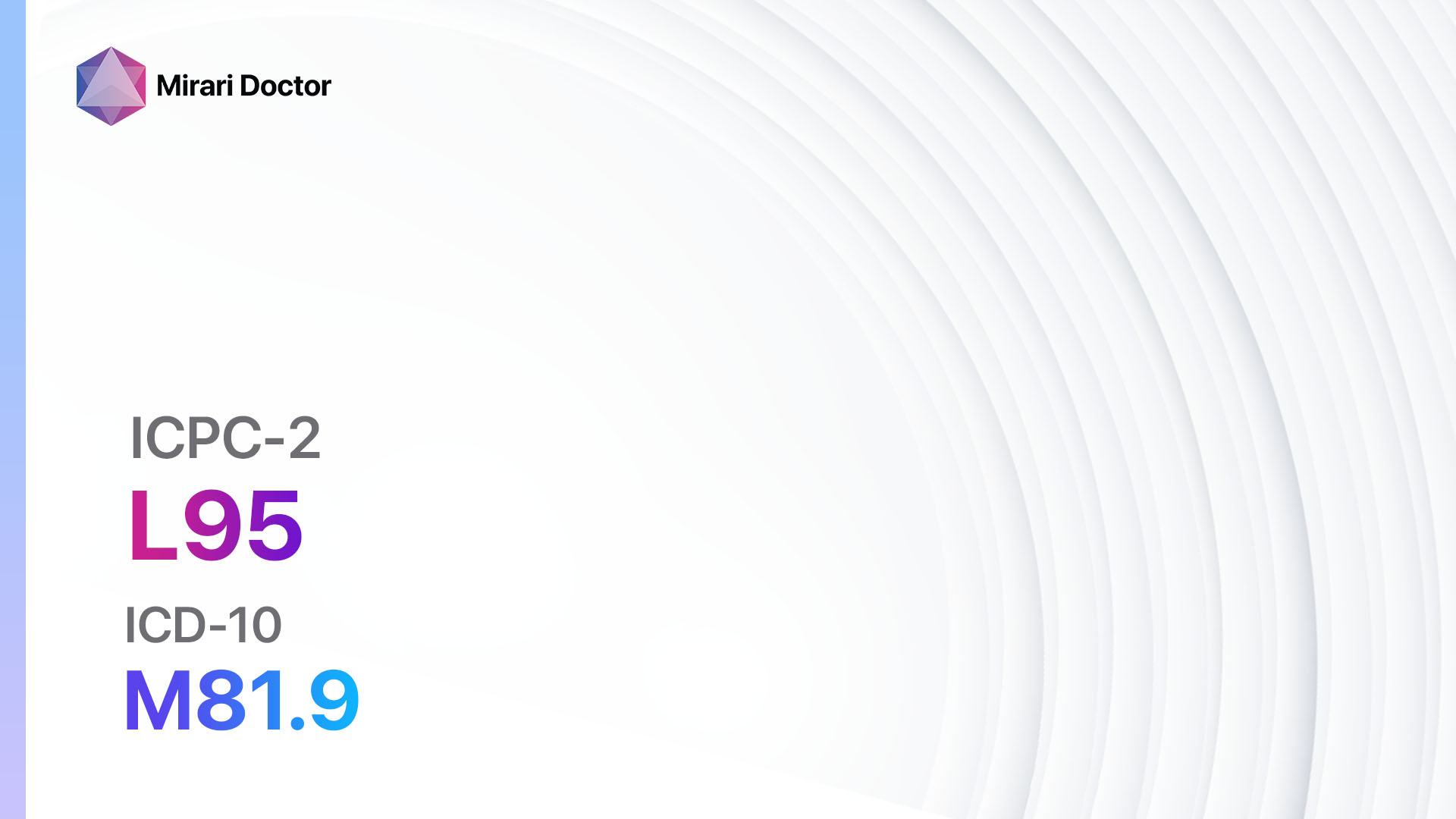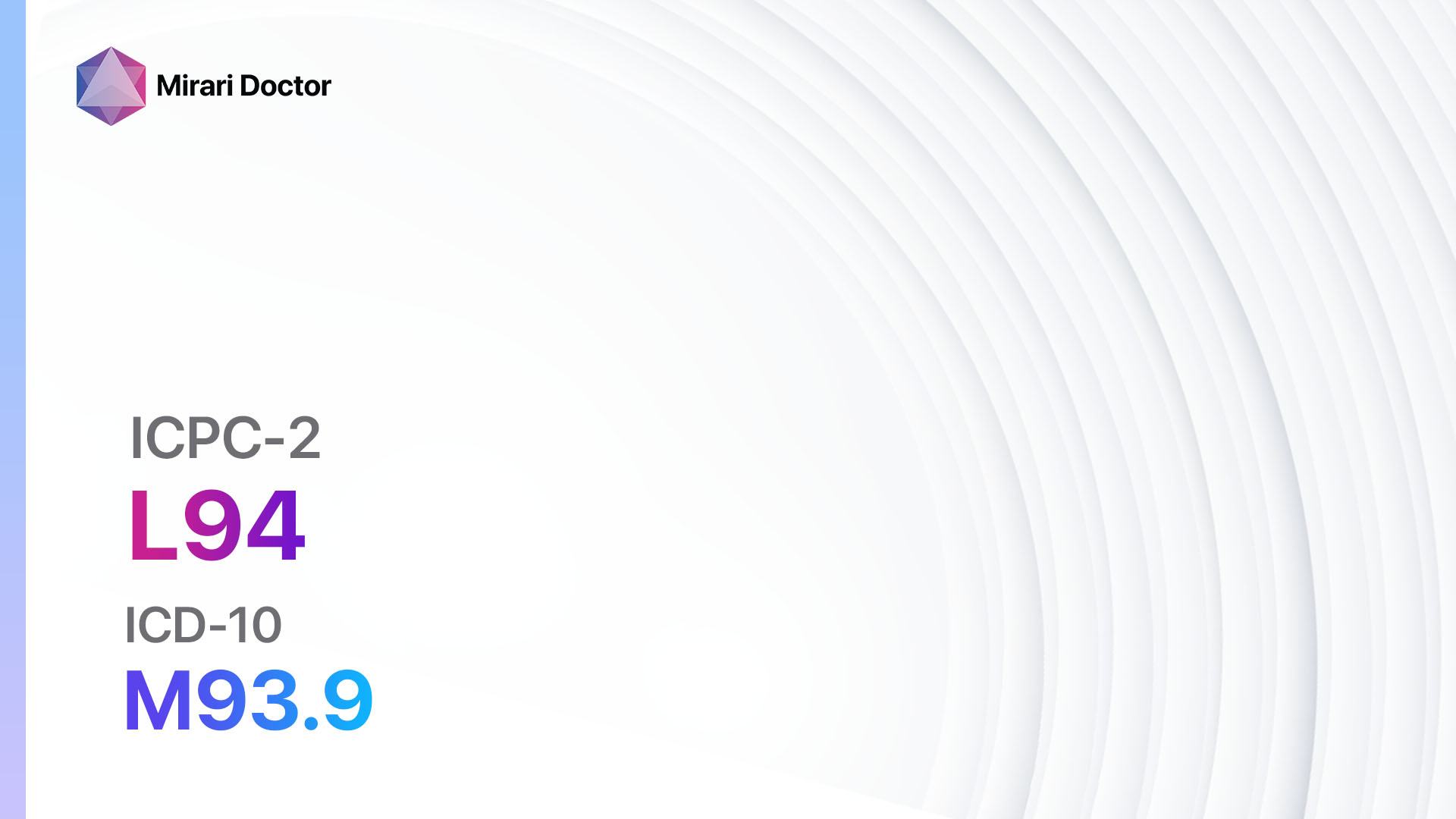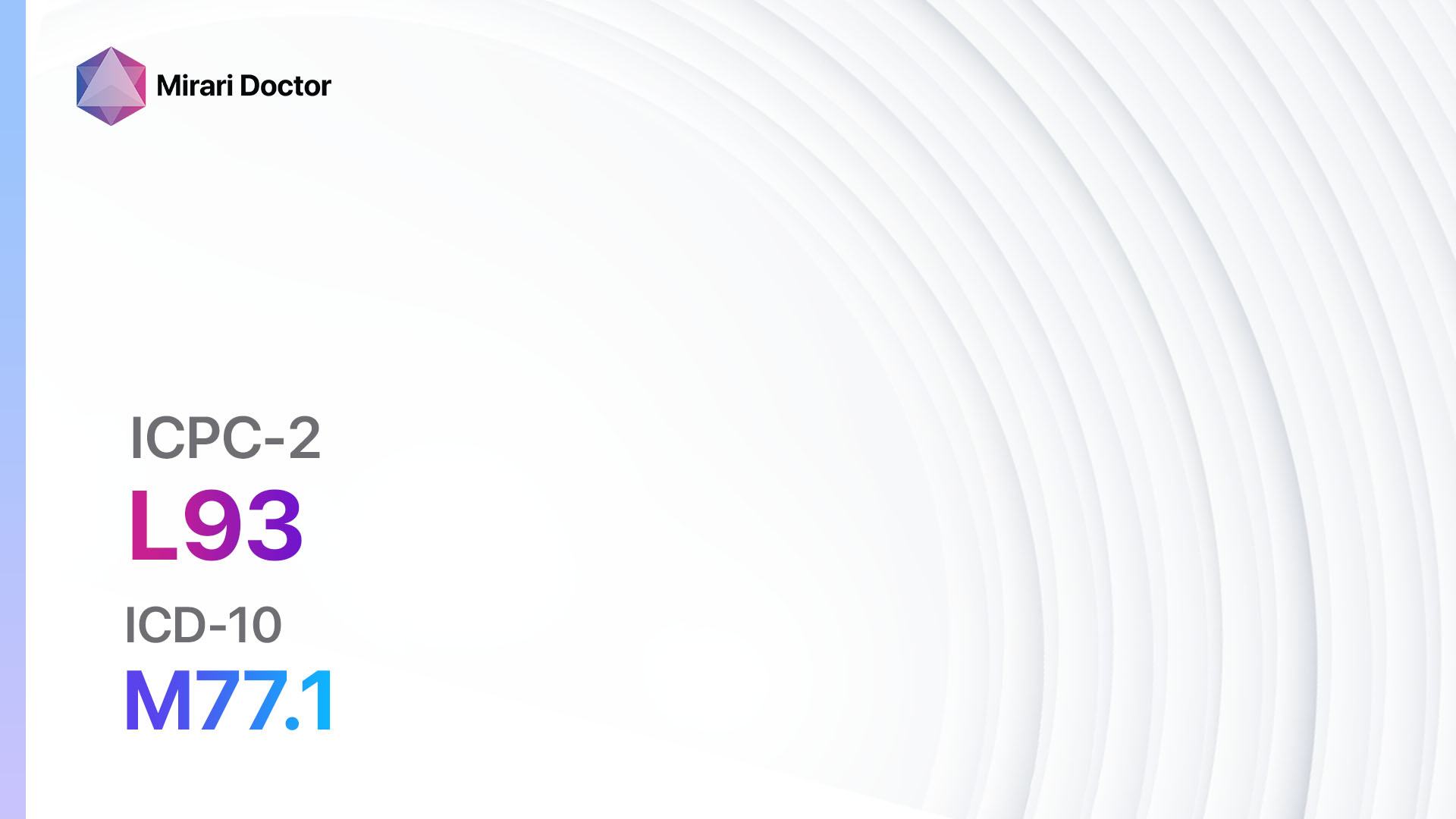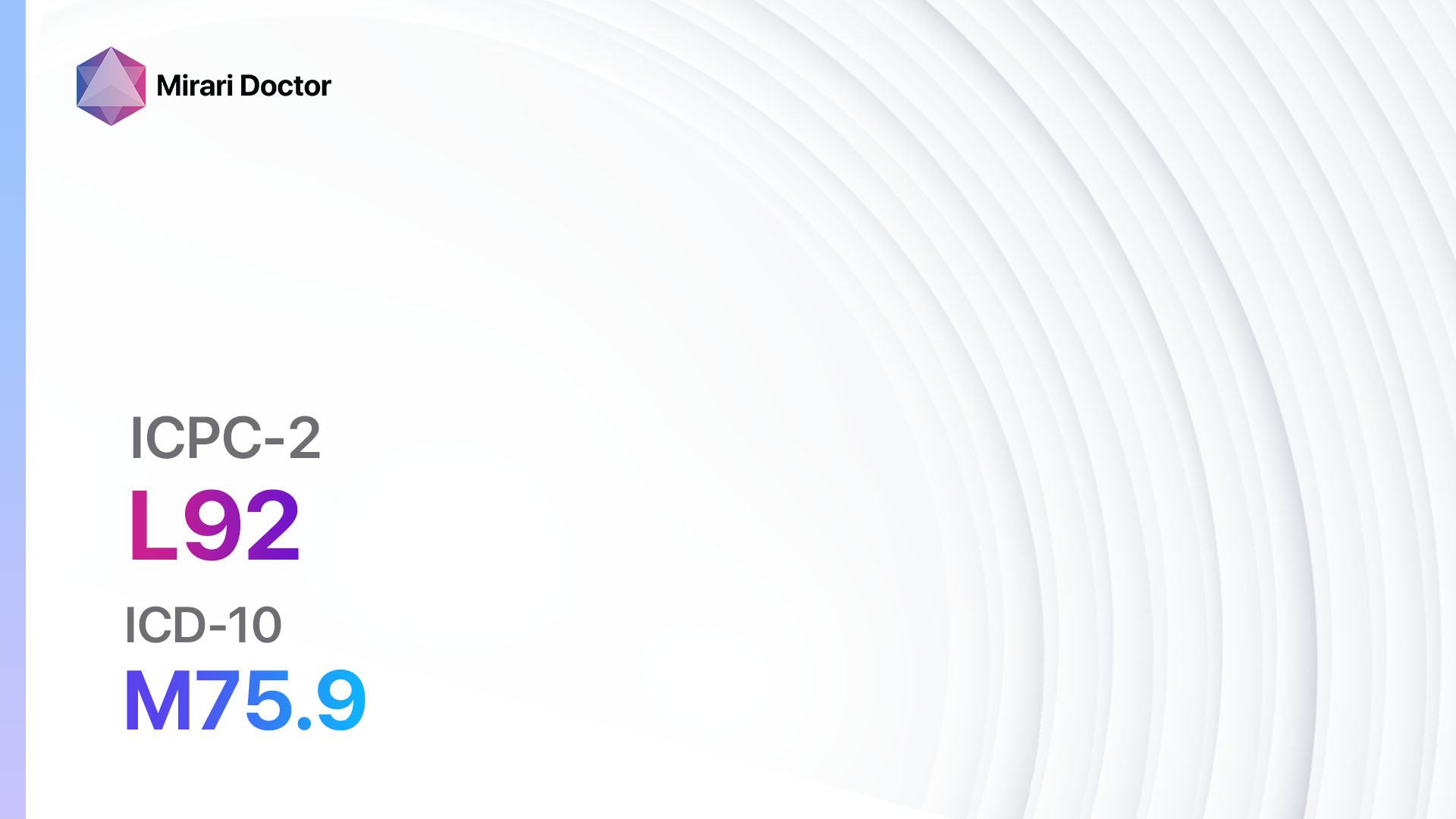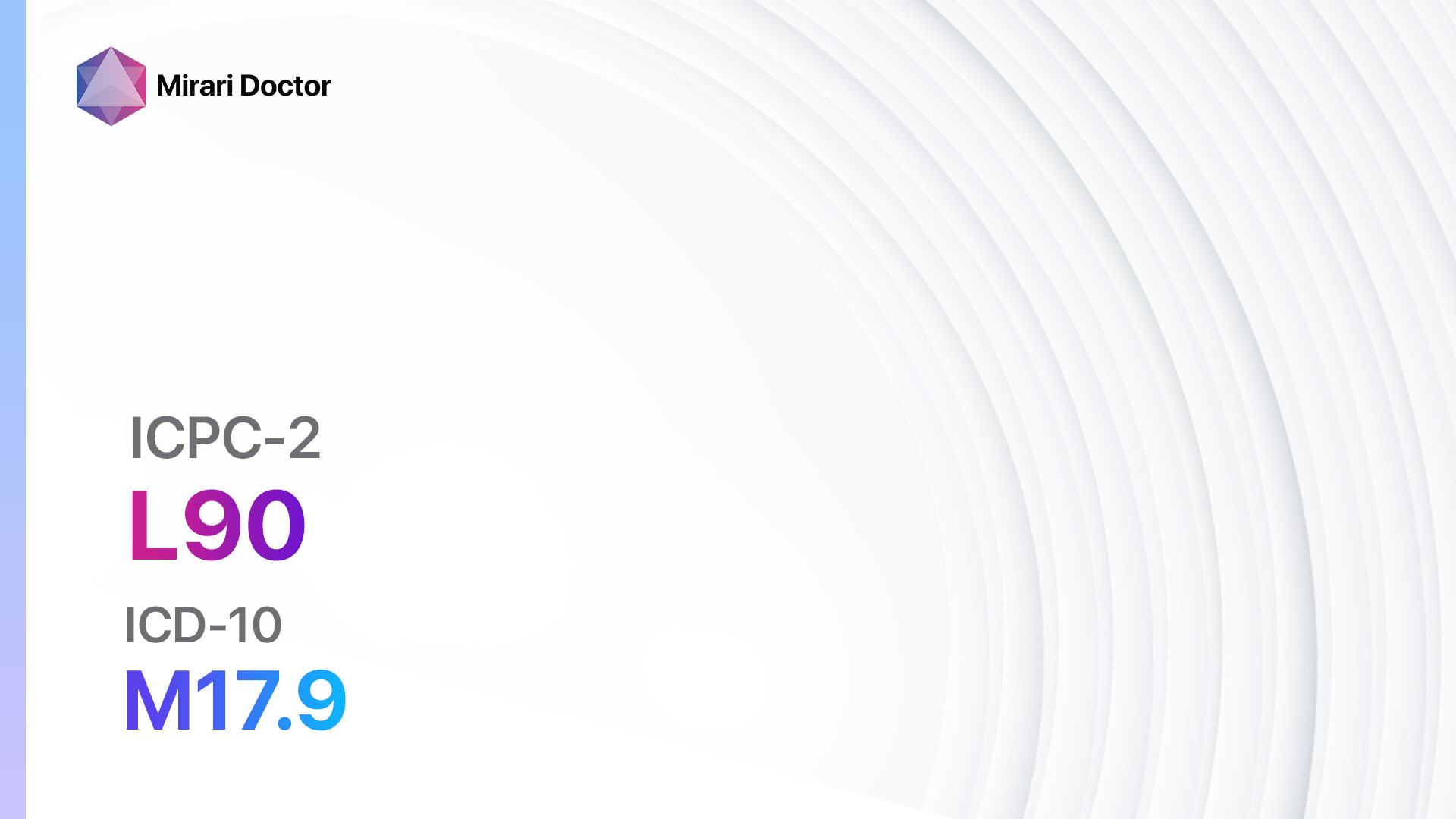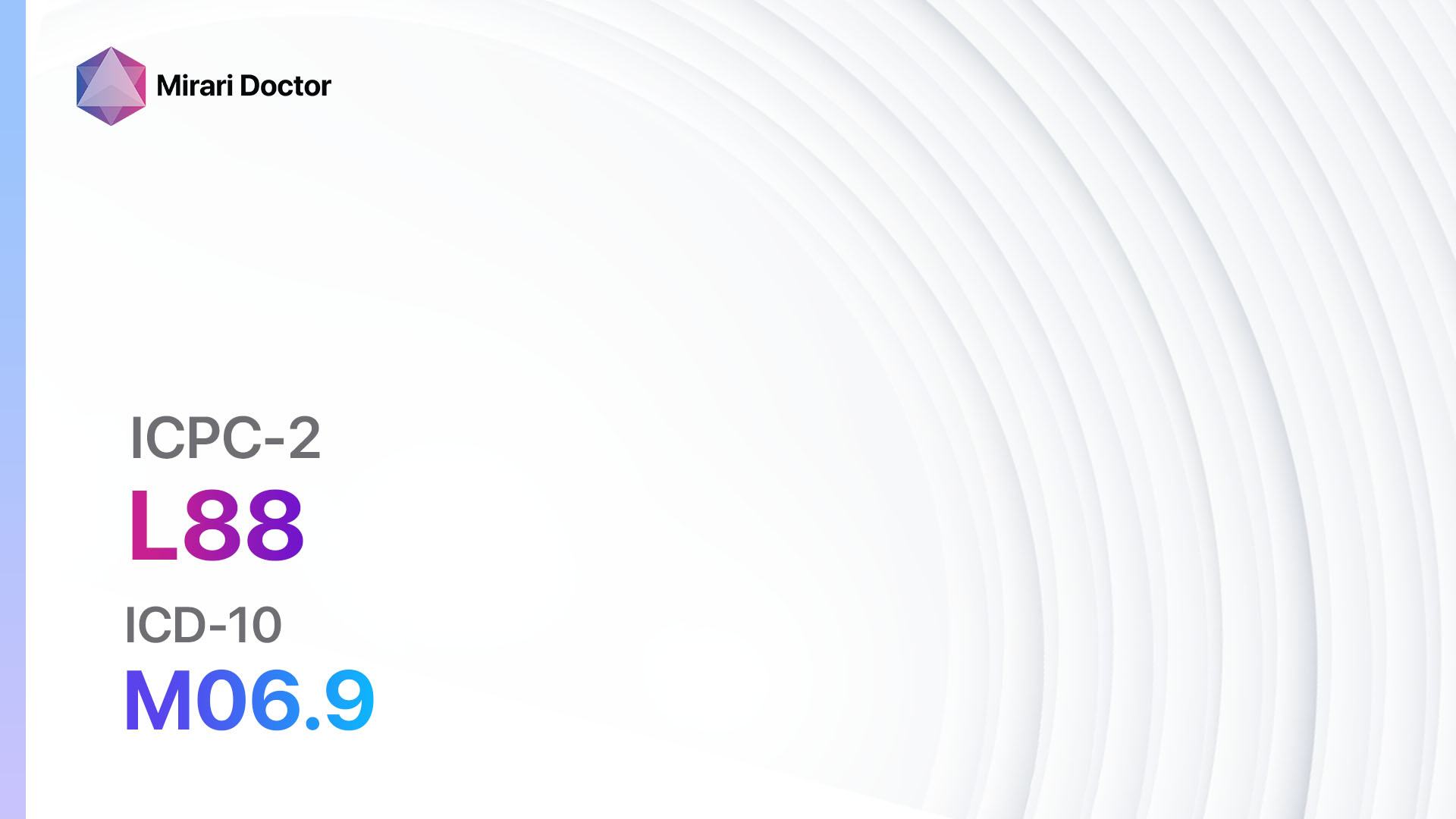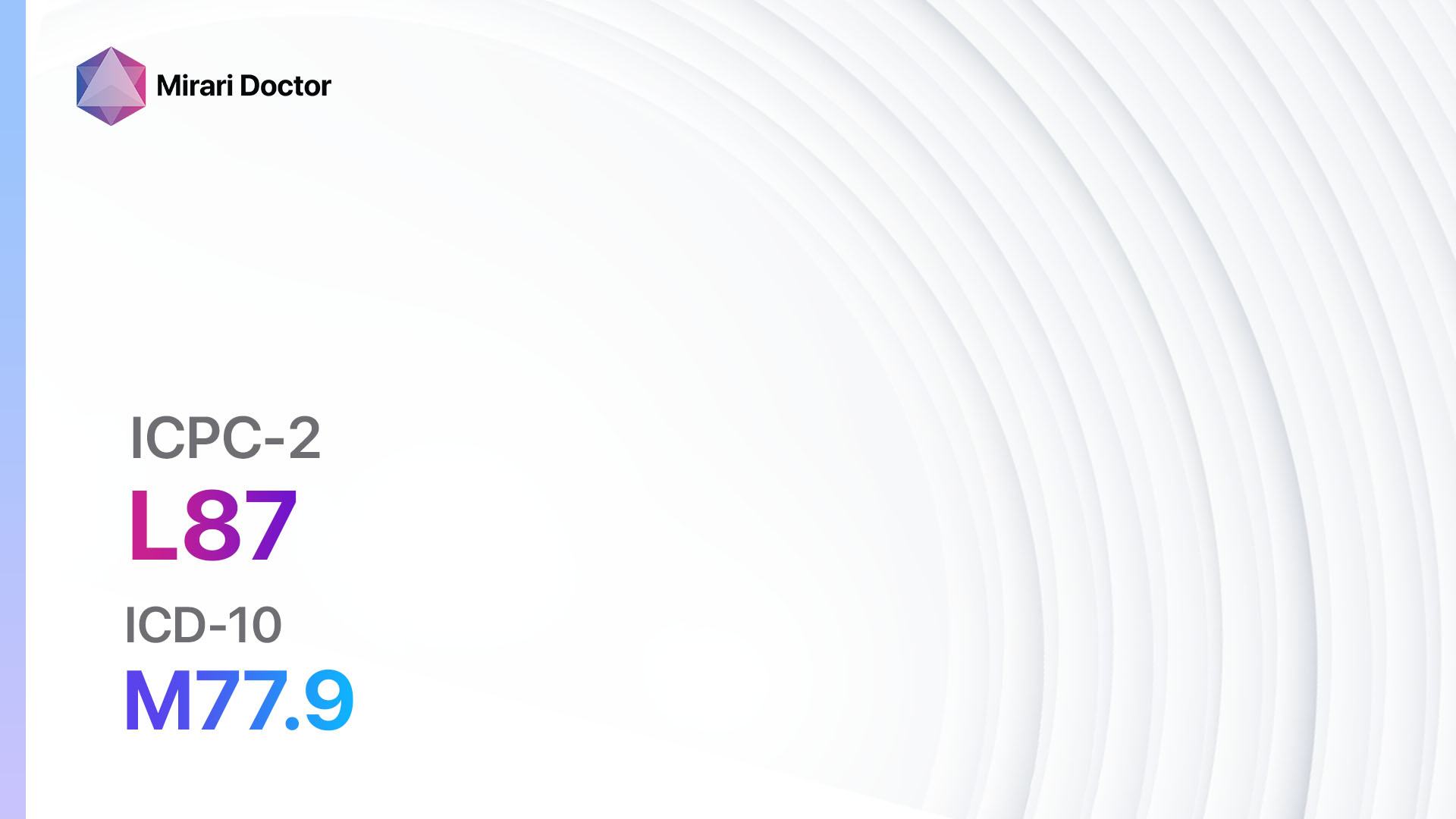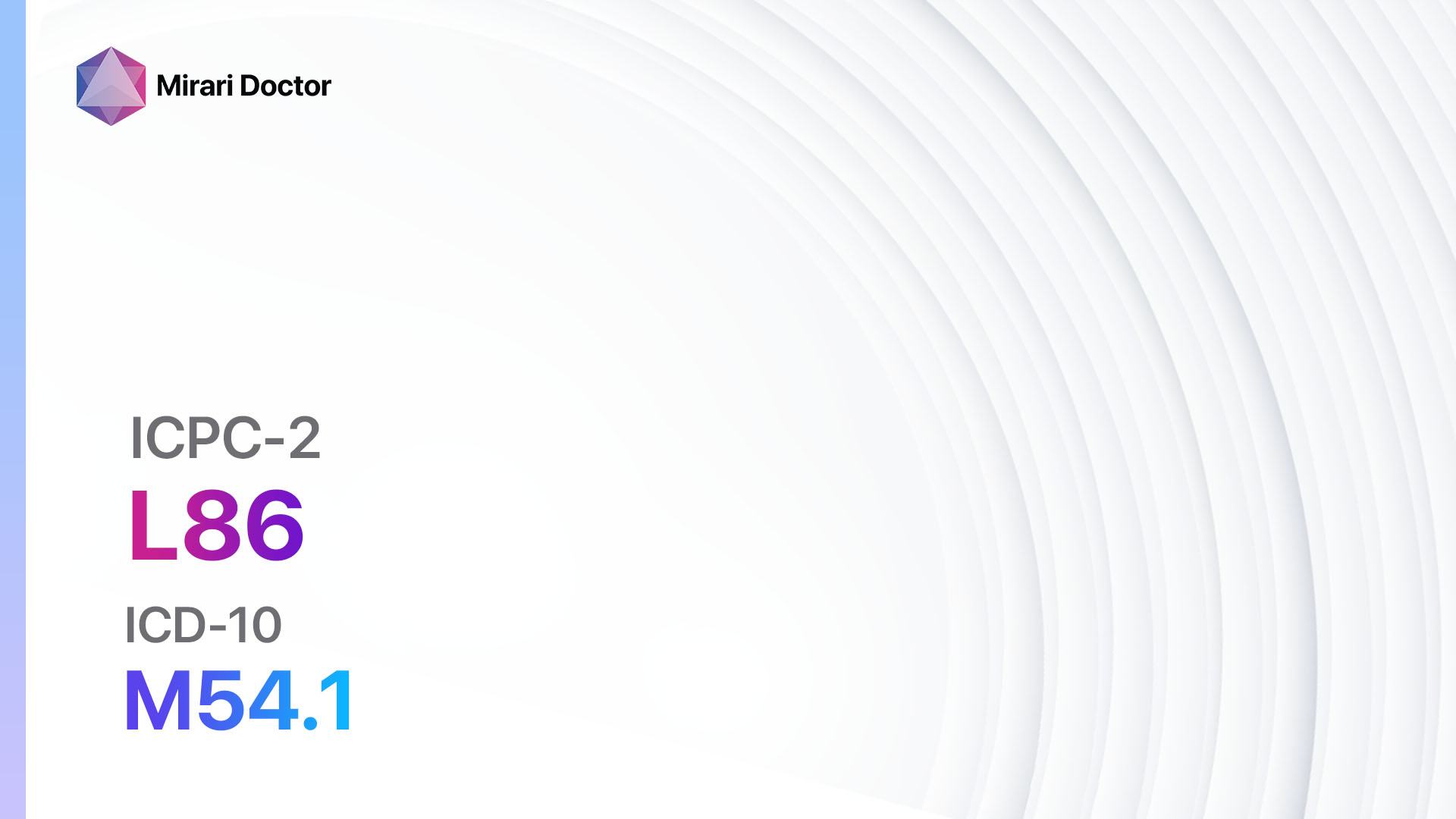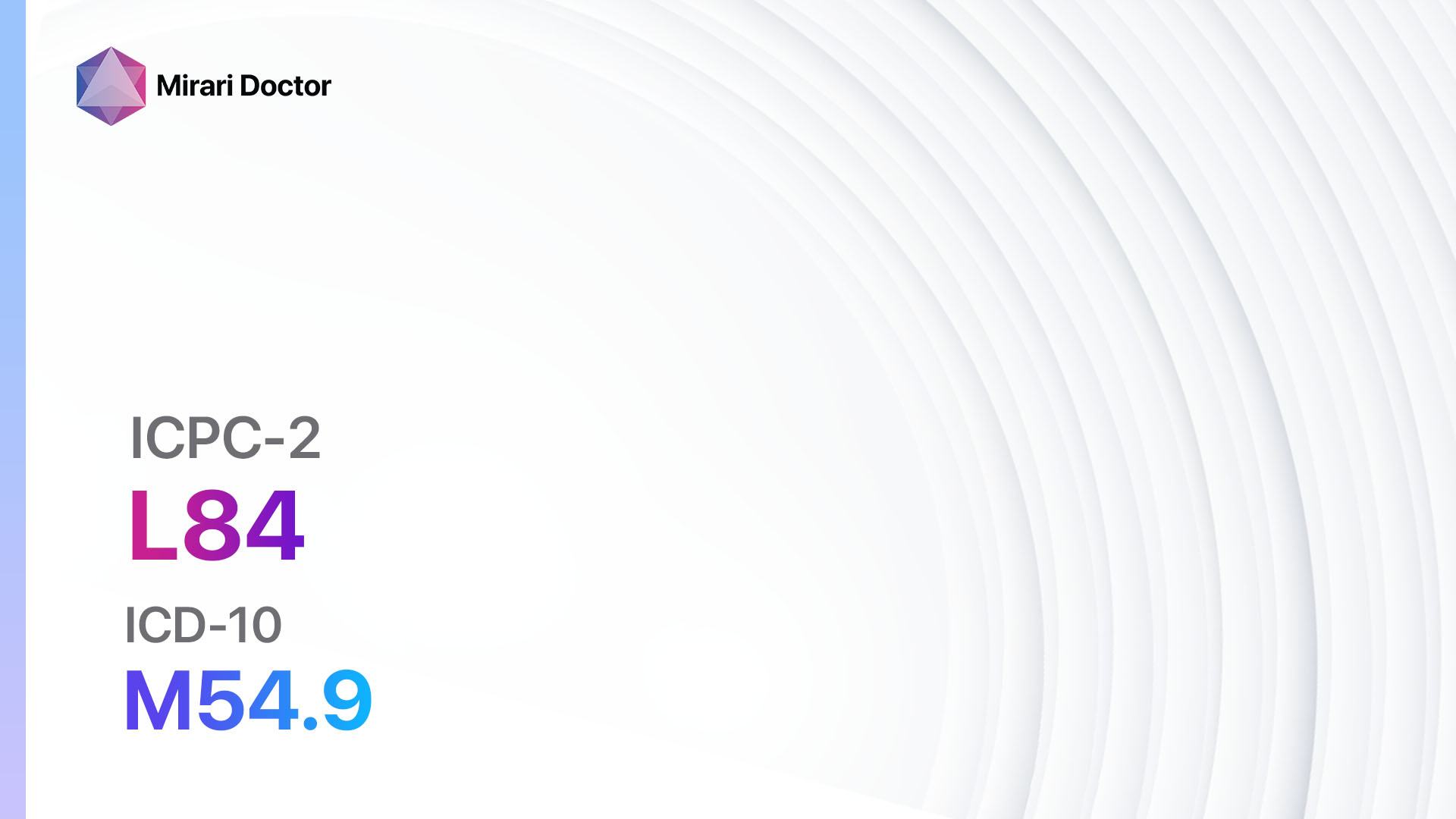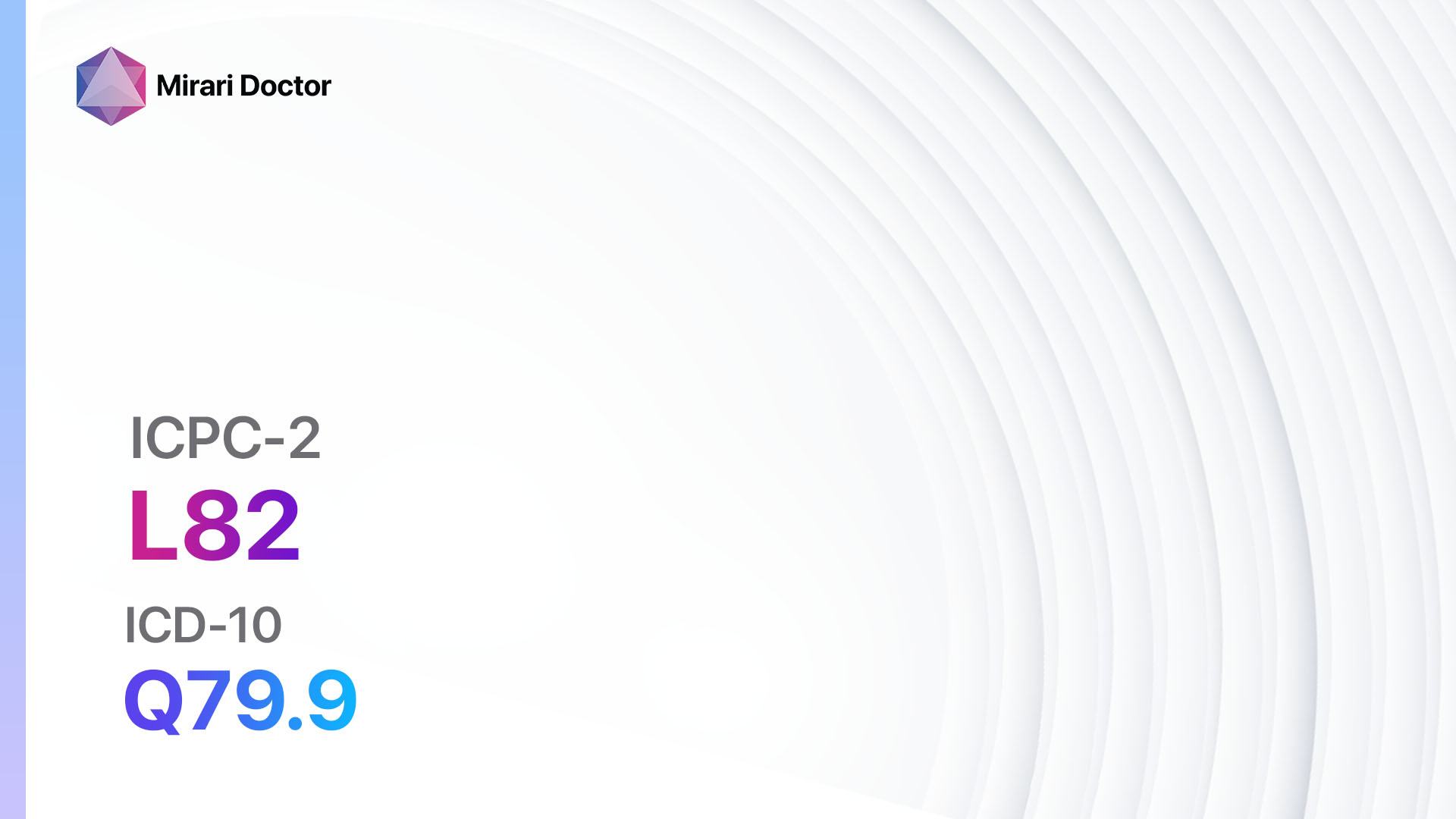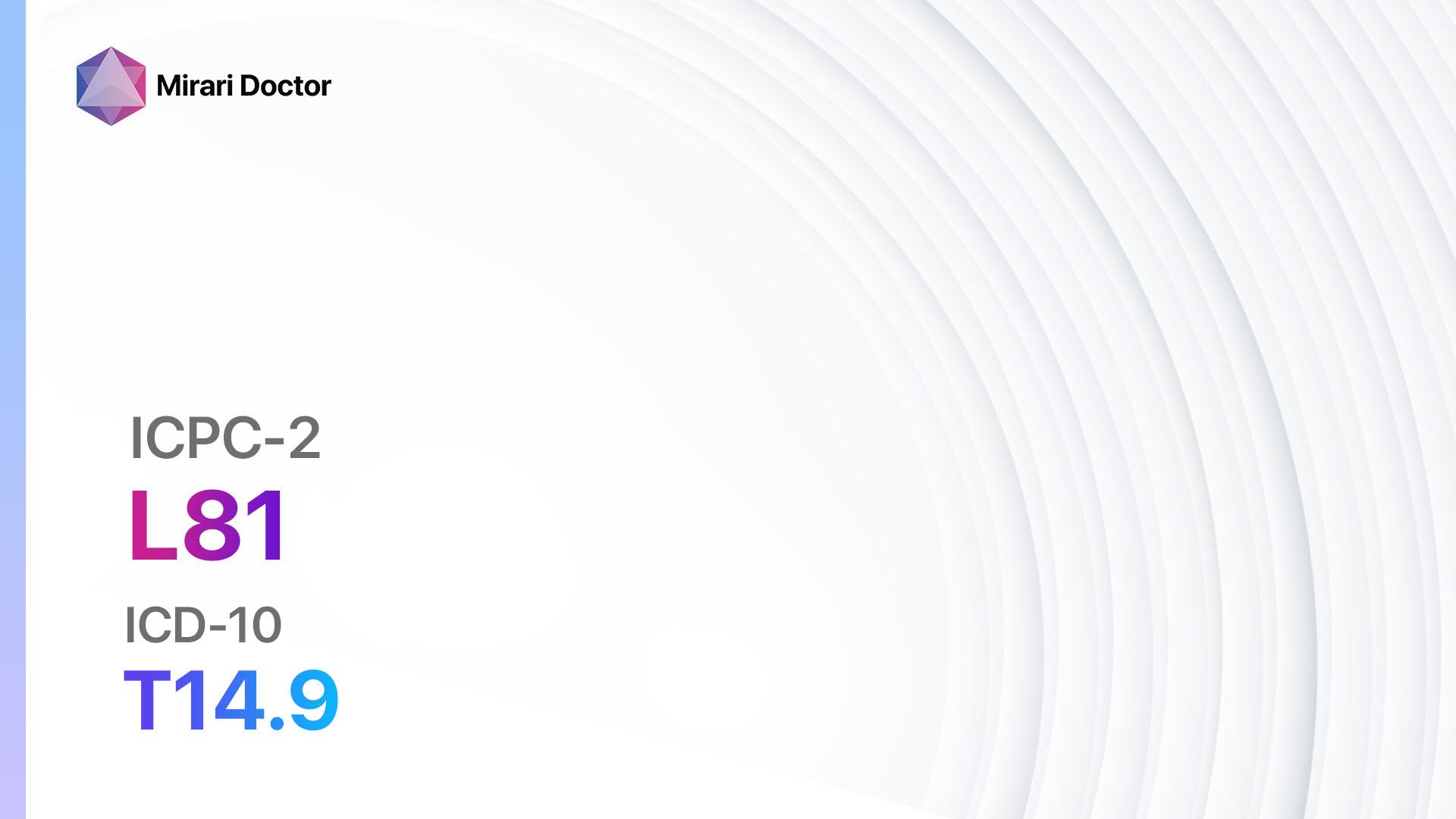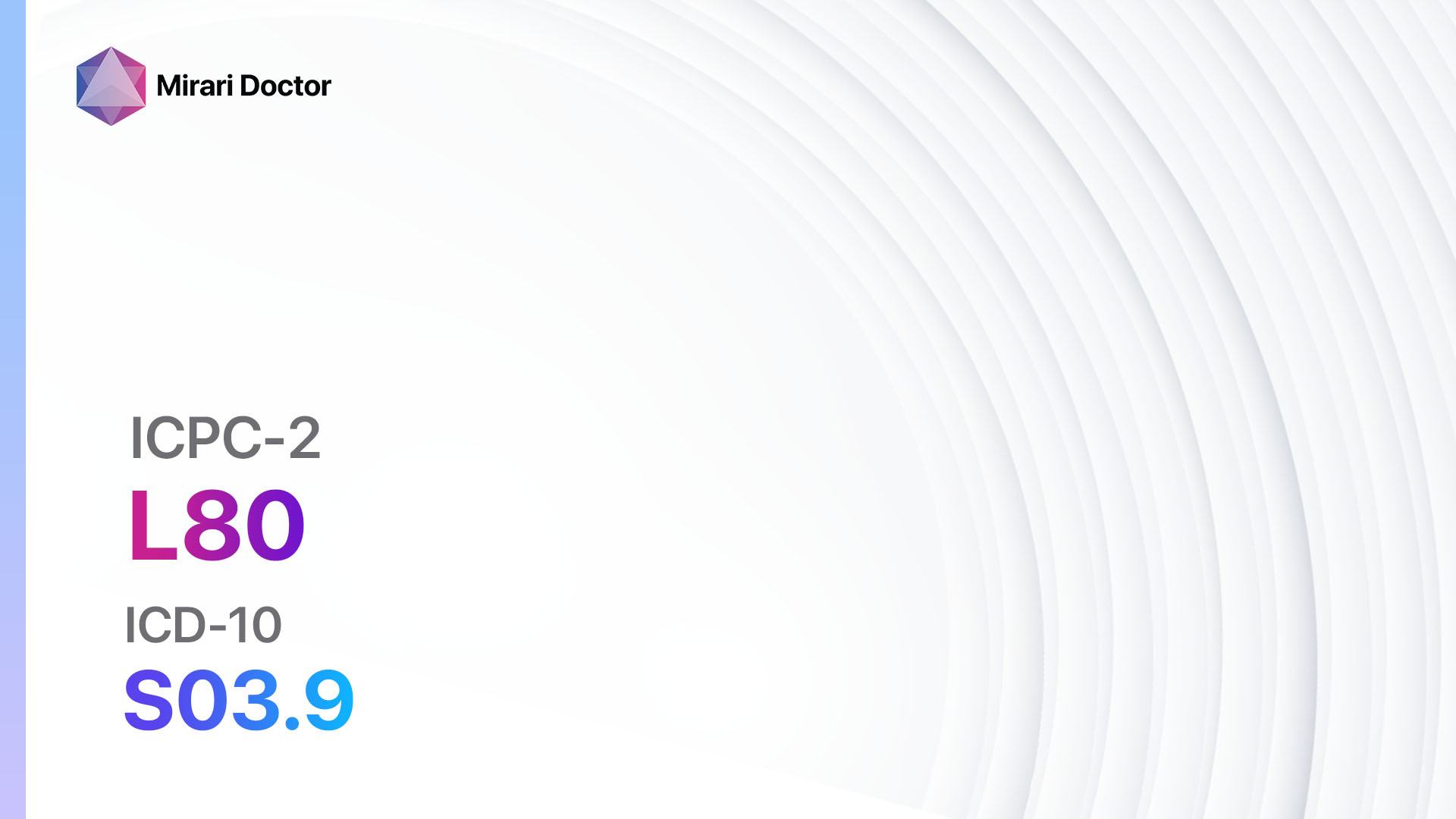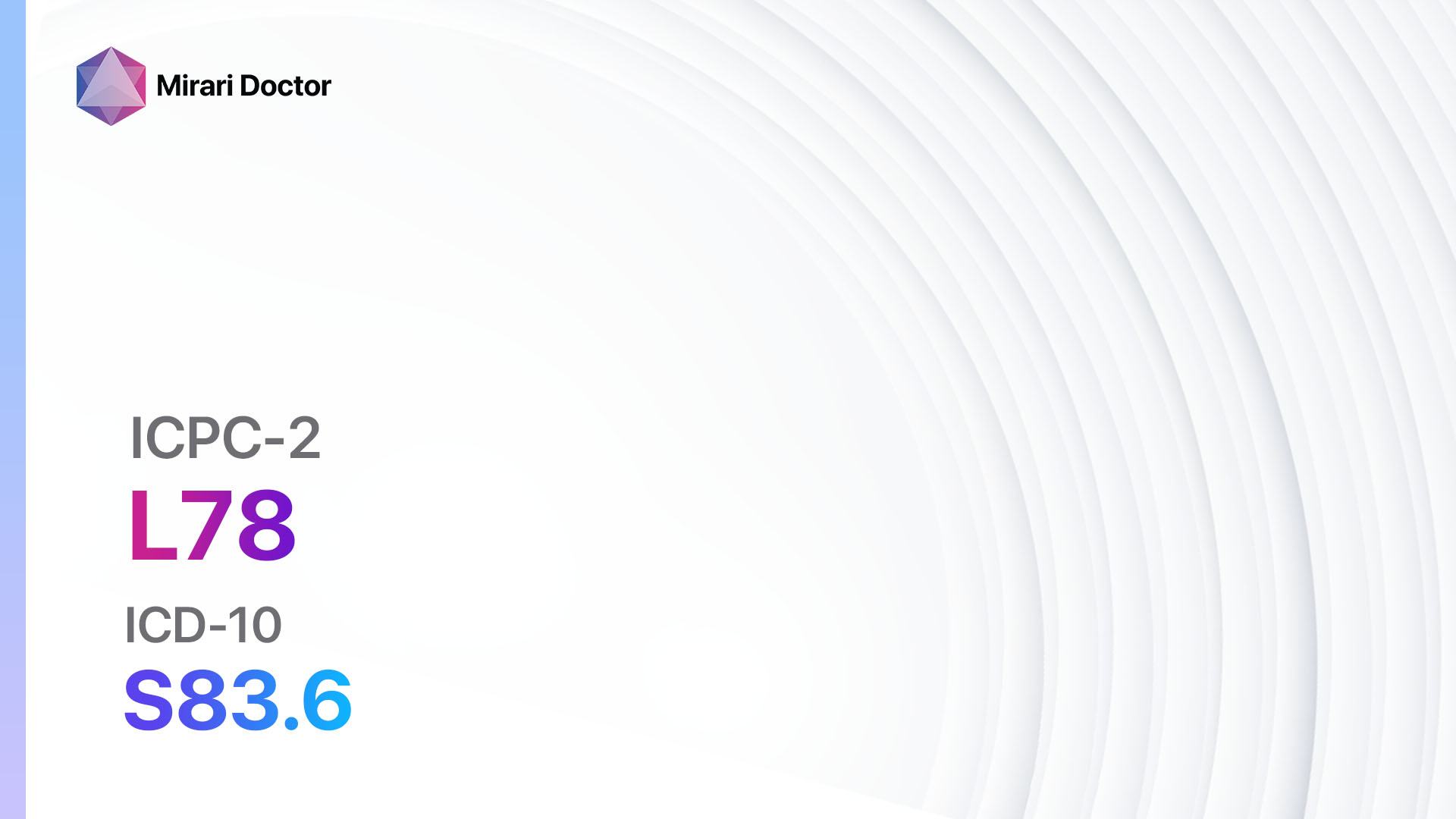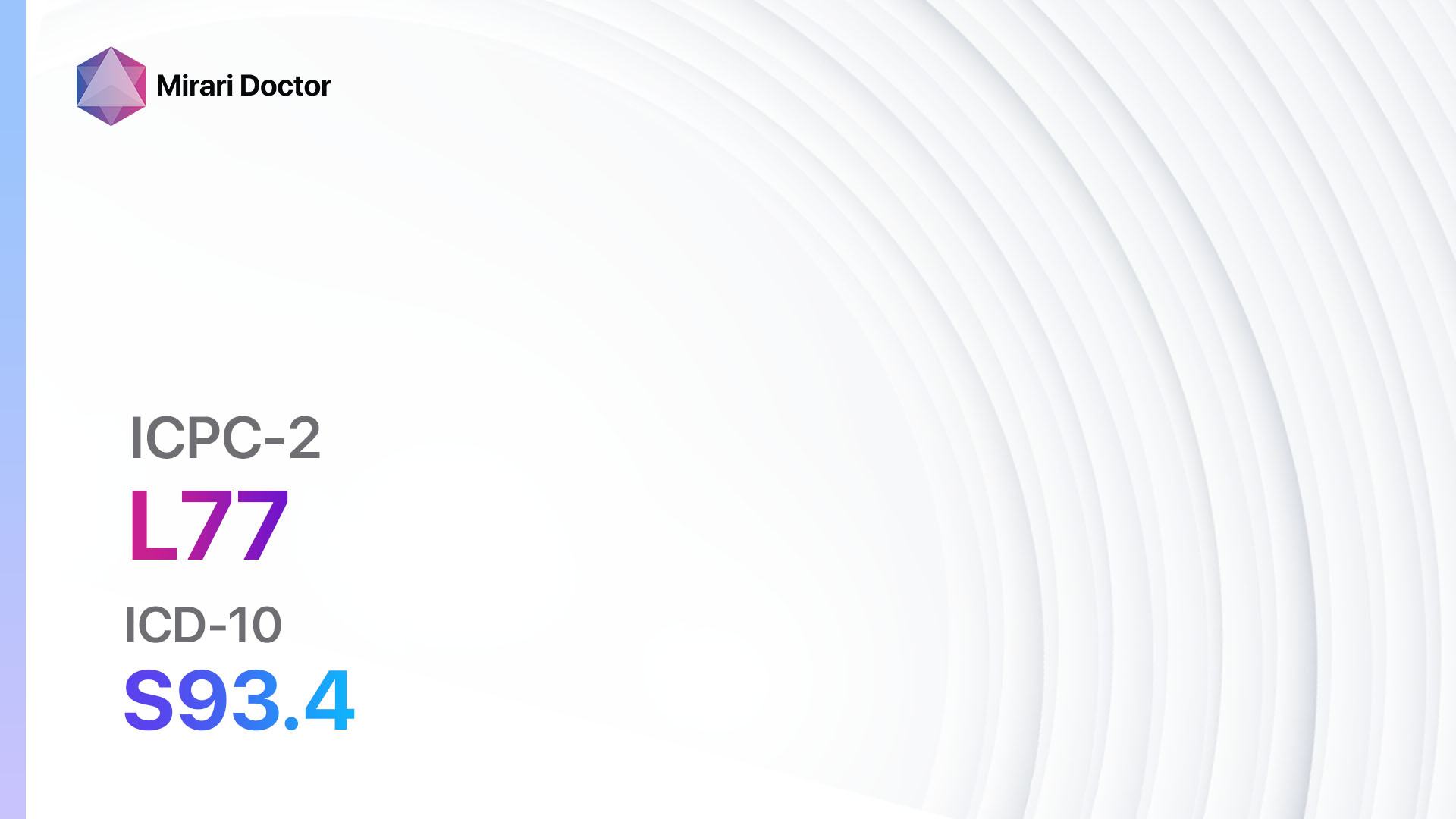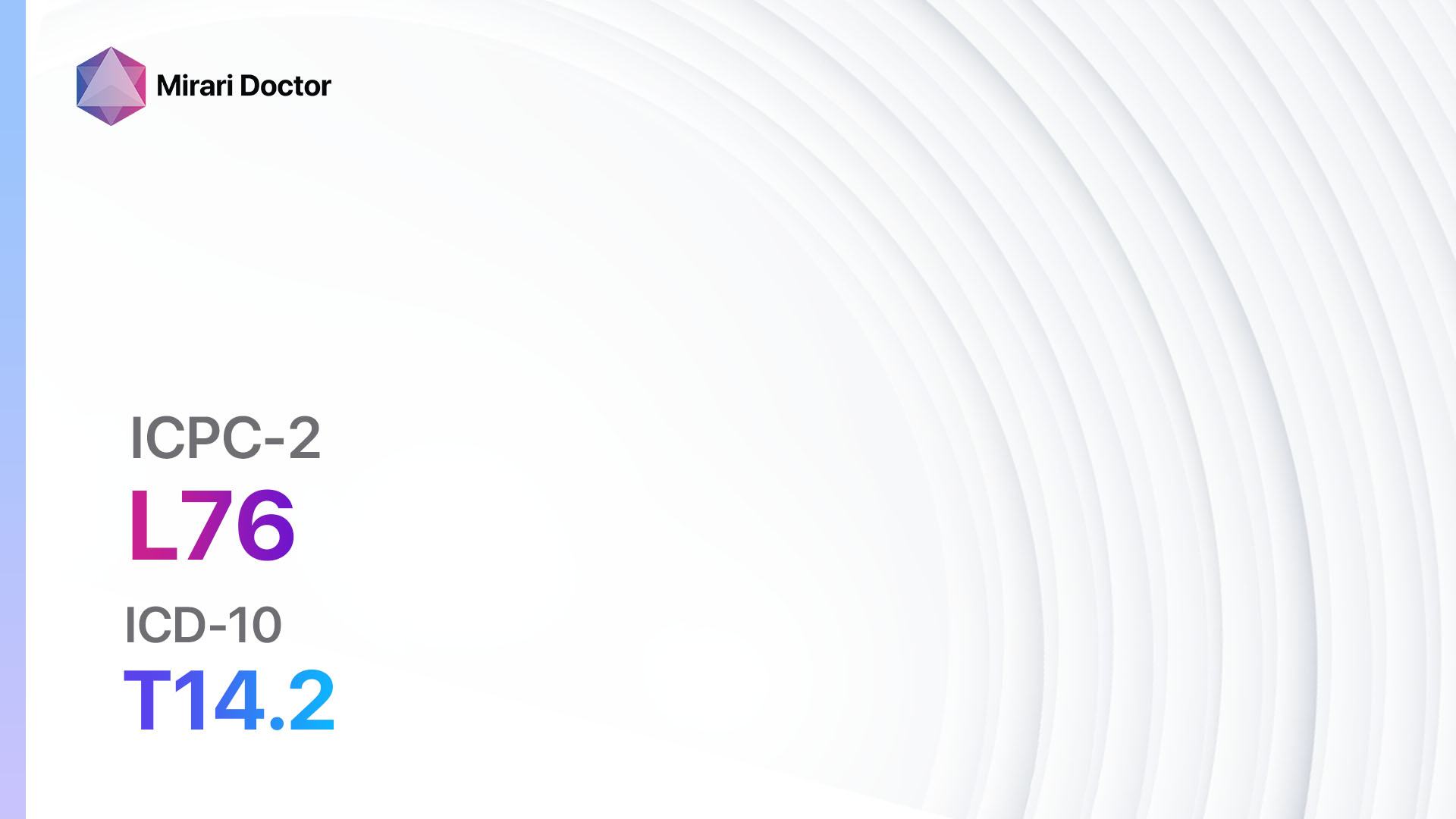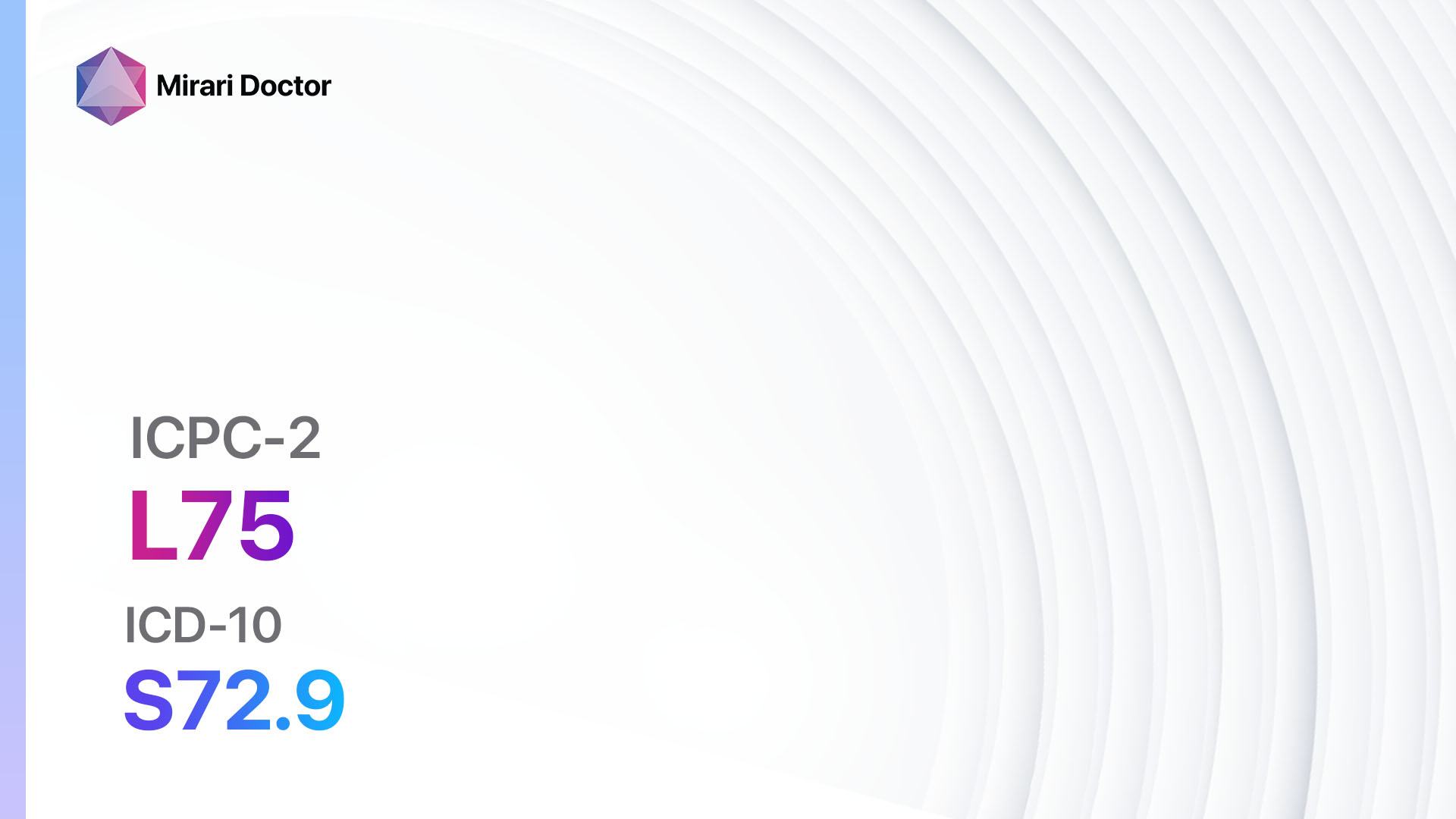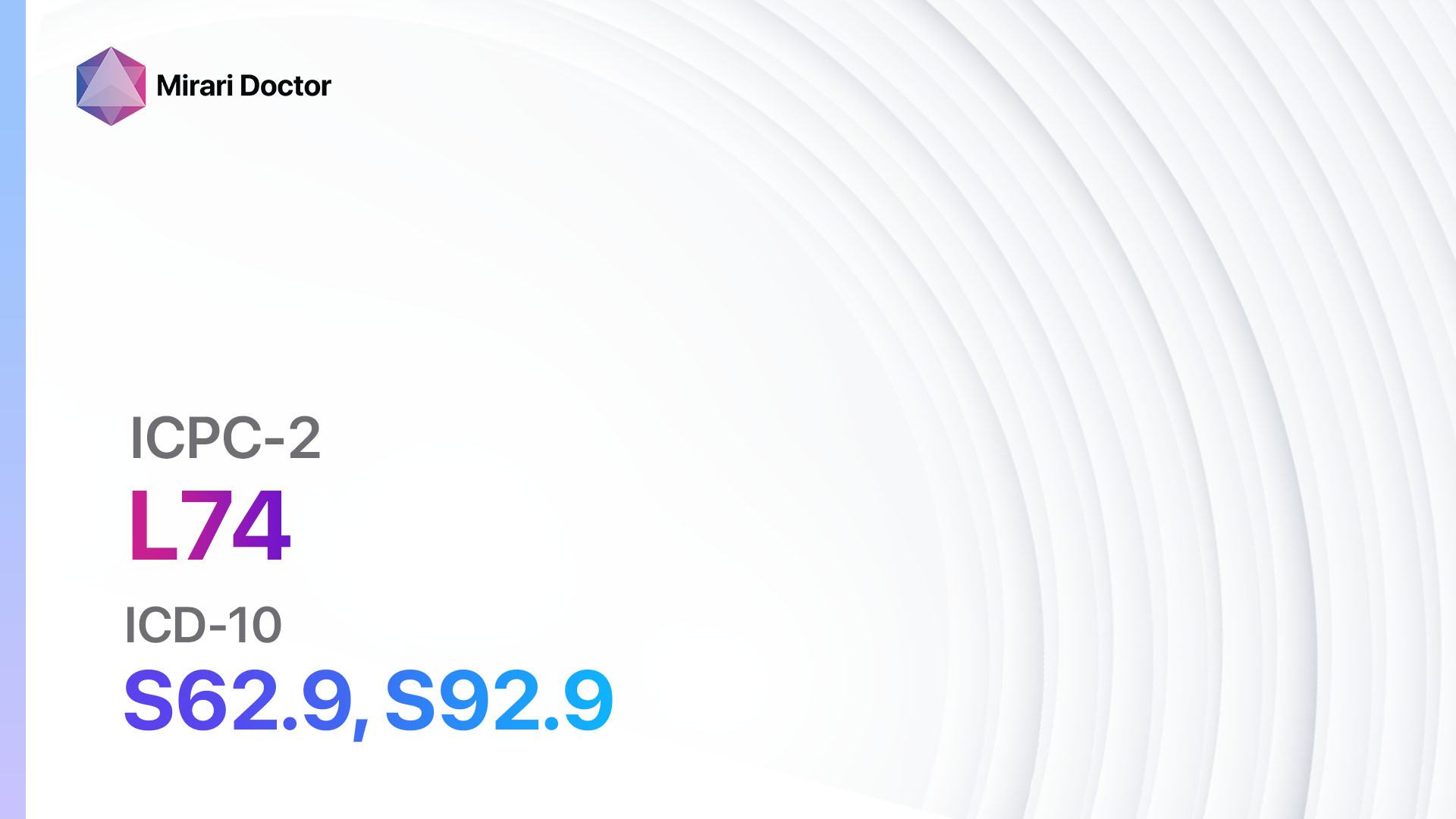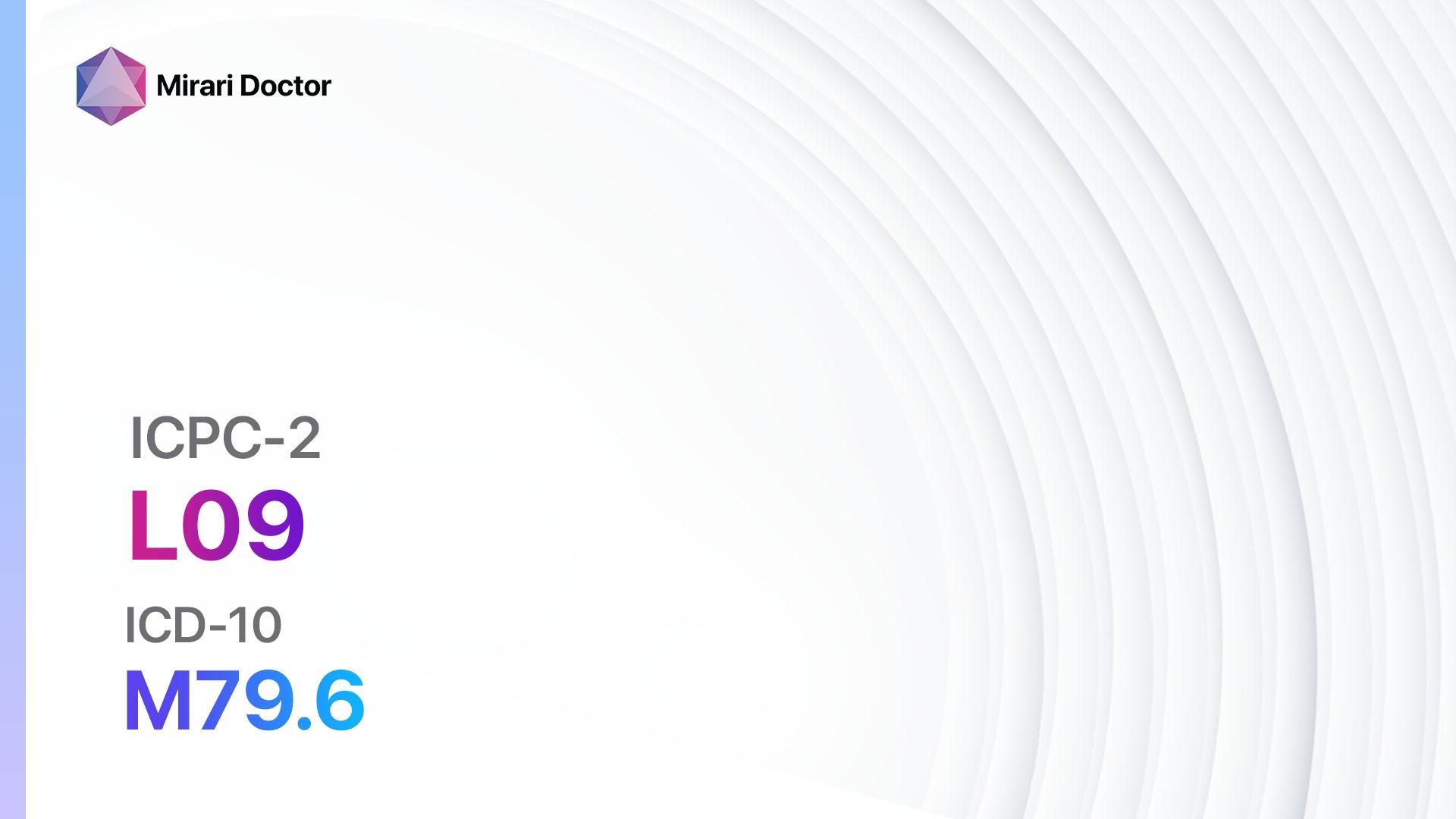
Introduction
Arm symptoms or complaints can range from mild discomfort to severe pain and can be caused by various underlying conditions[1]. This guide aims to provide a comprehensive overview of the symptoms, causes, diagnostic steps, possible interventions, and lifestyle interventions for arm symptoms or complaints.
Codes
Symptoms
- Pain in the arm: This can range from mild to severe and may be localized or radiating[4].
- Weakness or numbness in the arm: This can affect the ability to perform daily activities[5].
- Swelling or inflammation in the arm: This may be accompanied by redness or warmth[6].
- Limited range of motion in the arm: Difficulty in moving the arm fully[7].
- Tingling or pins and needles sensation in the arm: This may indicate nerve involvement[8].
Causes
- Musculoskeletal injuries: Sprains, strains, fractures, or dislocations can cause arm symptoms[9].
- Nerve compression: Conditions such as carpal tunnel syndrome or cervical radiculopathy can lead to arm symptoms[10].
- Inflammatory conditions: Conditions like arthritis or tendinitis can cause arm pain and inflammation.
- Circulatory issues: Poor blood flow or vascular diseases can result in arm symptoms.
- Infection: Arm symptoms can be a result of an infection, such as cellulitis or abscess.
Diagnostic Steps
Medical History
- Gather information about the onset, duration, and progression of arm symptoms.
- Identify any previous injuries or medical conditions that may be contributing to the symptoms.
- Assess for any risk factors, such as repetitive motions or occupational hazards.
Physical Examination
- Perform a thorough examination of the arm, including inspection, palpation, and range of motion assessment.
- Look for any signs of swelling, inflammation, or deformity.
- Assess muscle strength and sensation in the affected arm.
Laboratory Tests
- Complete blood count (CBC): To rule out infection or systemic conditions.
- Erythrocyte sedimentation rate (ESR) or C-reactive protein (CRP): To assess for inflammation.
- Blood glucose levels: To screen for diabetes or metabolic disorders.
- Rheumatoid factor or anti-nuclear antibody (ANA) test: To evaluate for autoimmune conditions.
- Blood lipid profile: To assess for cardiovascular risk factors.
Diagnostic Imaging
- X-ray: To evaluate for fractures, dislocations, or joint abnormalities.
- Ultrasound: To assess soft tissue structures, such as tendons or ligaments.
- Magnetic resonance imaging (MRI): To visualize soft tissues, nerves, or blood vessels in detail.
- Computed tomography (CT) scan: To assess bony structures or blood vessels.
- Doppler ultrasound: To evaluate blood flow and detect any vascular abnormalities.
Other Tests
- Electromyography (EMG) and nerve conduction studies (NCS): To assess nerve function and identify any nerve compression or damage.
- Arthroscopy: A minimally invasive procedure to visualize and treat joint conditions.
- Biopsy: If infection or malignancy is suspected, a tissue sample may be taken for further evaluation.
Follow-up and Patient Education
- Schedule follow-up appointments to monitor the progress of the arm symptoms and adjust treatment if necessary.
- Provide education on self-care measures, such as rest, ice, compression, and elevation (RICE) for acute injuries.
- Educate patients on the importance of adherence to treatment plans and the potential for recurrence or complications.
Possible Interventions
Traditional Interventions
Medications:
Top 5 drugs for arm symptoms/complaints:
- Nonsteroidal anti-inflammatory drugs (NSAIDs) (e.g., Ibuprofen, Naproxen):
- Cost: Generic versions can be $3-$20/month.
- Contraindications: Active peptic ulcer disease, history of gastrointestinal bleeding, renal impairment.
- Side effects: Upset stomach, heartburn, dizziness.
- Severe side effects: Gastrointestinal bleeding, kidney damage, allergic reactions.
- Drug interactions: Anticoagulants, corticosteroids, selective serotonin reuptake inhibitors (SSRIs).
- Warning: Prolonged use may increase the risk of cardiovascular events.
- Muscle relaxants (e.g., Cyclobenzaprine, Methocarbamol):
- Cost: Generic versions can be $10-$30/month.
- Contraindications: Glaucoma, urinary retention, history of drug abuse.
- Side effects: Drowsiness, dizziness, dry mouth.
- Severe side effects: Severe allergic reactions, liver toxicity.
- Drug interactions: Central nervous system depressants, monoamine oxidase inhibitors (MAOIs).
- Warning: May cause drowsiness, avoid driving or operating heavy machinery.
- Antidepressants (e.g., Amitriptyline, Duloxetine):
- Cost: Generic versions can be $10-$50/month.
- Contraindications: Recent myocardial infarction, narrow-angle glaucoma, concurrent use of monoamine oxidase inhibitors (MAOIs).
- Side effects: Dry mouth, drowsiness, constipation.
- Severe side effects: Suicidal thoughts, serotonin syndrome.
- Drug interactions: MAOIs, selective serotonin reuptake inhibitors (SSRIs), tramadol.
- Warning: May take several weeks to achieve therapeutic effect.
- Corticosteroids (e.g., Prednisone, Methylprednisolone):
- Cost: Generic versions can be $10-$50/month.
- Contraindications: Active infections, systemic fungal infections, recent vaccination.
- Side effects: Increased appetite, weight gain, mood changes.
- Severe side effects: Adrenal suppression, osteoporosis, increased risk of infection.
- Drug interactions: Nonsteroidal anti-inflammatory drugs (NSAIDs), anticoagulants, antidiabetic medications.
- Warning: Long-term use may require gradual tapering to avoid adrenal insufficiency.
- Opioids (e.g., Oxycodone, Hydrocodone):
- Cost: Generic versions can be $10-$50/month.
- Contraindications: Respiratory depression, acute or severe bronchial asthma, paralytic ileus.
- Side effects: Constipation, drowsiness, nausea.
- Severe side effects: Respiratory depression, addiction, overdose.
- Drug interactions: Benzodiazepines, alcohol, other central nervous system depressants.
- Warning: High potential for addiction and misuse, should be used cautiously and for short durations.
Alternative Drugs:
- Topical analgesics (e.g., Lidocaine patches, Capsaicin cream): Provide localized pain relief. Cost: $10-$30 per application.
- Anticonvulsants (e.g., Gabapentin, Pregabalin): Can help with nerve-related pain. Cost: $10-$50/month.
- Tricyclic antidepressants (e.g., Nortriptyline, Desipramine): May be effective for neuropathic pain. Cost: $10-$50/month.
- Steroid injections: Administered directly into the affected area for localized pain relief. Cost: $100-$500 per injection.
- Antispasmodics (e.g., Baclofen, Tizanidine): Can help with muscle spasms. Cost: $10-$50/month.
Surgical Procedures:
- Arthroscopy: Minimally invasive procedure to diagnose and treat joint conditions. Cost: $5,000-$10,000.
- Fracture fixation: Surgical repair of fractures using plates, screws, or rods. Cost: $10,000-$30,000.
- Nerve decompression: Surgical release of compressed nerves to relieve symptoms. Cost: $5,000-$15,000.
- Joint replacement: Surgical removal and replacement of damaged joints. Cost: $20,000-$50,000.
- Tendon repair: Surgical repair of torn or damaged tendons. Cost: $5,000-$15,000.
Alternative Interventions
- Acupuncture: May help reduce pain and improve blood flow. Cost: $60-$120 per session.
- Chiropractic care: Manipulative therapy to improve joint function and reduce pain. Cost: $50-$200 per session.
- Physical therapy: Exercises and techniques to improve strength, flexibility, and range of motion. Cost: $50-$150 per session.
- Massage therapy: Manual manipulation of soft tissues to reduce pain and promote relaxation. Cost: $50-$100 per session.
- Herbal supplements: Some herbs, such as turmeric or ginger, may have anti-inflammatory properties. Cost: Varies depending on the specific supplement.
Lifestyle Interventions
- Rest and elevation: Resting the affected arm and elevating it can help reduce swelling and promote healing. Cost: Free.
- Heat or cold therapy: Applying heat or cold packs to the affected area can help reduce pain and inflammation. Cost: $10-$30 for packs.
- Exercise and stretching: Regular exercise and stretching can improve strength, flexibility, and range of motion. Cost: Free or gym membership fees.
- Weight management: Maintaining a healthy weight can reduce stress on the arm joints and muscles. Cost: Varies depending on diet and exercise choices.
- Ergonomic modifications: Making adjustments to workstations or equipment to reduce strain on the arm. Cost: Varies depending on the modifications needed.
It is important to note that the cost ranges provided are approximate and may vary depending on the location and availability of the interventions. It is recommended to consult with a healthcare professional for personalized treatment options and cost estimates.
Mirari Cold Plasma Alternative Intervention
Understanding Mirari Cold Plasma
- Safe and Non-Invasive Treatment: Mirari Cold Plasma is a safe and non-invasive treatment option for various skin conditions. It does not require incisions, minimizing the risk of scarring, bleeding, or tissue damage.
- Efficient Extraction of Foreign Bodies: Mirari Cold Plasma facilitates the removal of foreign bodies from the skin by degrading and dissociating organic matter, allowing easier access and extraction.
- Pain Reduction and Comfort: Mirari Cold Plasma has a local analgesic effect, providing pain relief during the treatment, making it more comfortable for the patient.
- Reduced Risk of Infection: Mirari Cold Plasma has antimicrobial properties, effectively killing bacteria and reducing the risk of infection.
- Accelerated Healing and Minimal Scarring: Mirari Cold Plasma stimulates wound healing and tissue regeneration, reducing healing time and minimizing the formation of scars.
Mirari Cold Plasma Prescription
Video instructions for using Mirari Cold Plasma Device – L09 Arm symptom/complaint (ICD-10:M79.6)
| Mild | Moderate | Severe |
| Mode setting: 2 (Wound Healing) Location: 0 (Localized) Morning: 15 minutes, Evening: 15 minutes |
Mode setting: 2 (Wound Healing) Location: 0 (Localized) Morning: 30 minutes, Lunch: 30 minutes, Evening: 30 minutes |
Mode setting: 2 (Wound Healing) Location: 0 (Localized) Morning: 30 minutes, Lunch: 30 minutes, Evening: 30 minutes |
| Mode setting: 9 (Arthritis) Location: 0 (Localized) Morning: 15 minutes, Evening: 15 minutes |
Mode setting: 9 (Arthritis) Location: 0 (Localized) Morning: 30 minutes, Lunch: 30 minutes, Evening: 30 minutes |
Mode setting: 9 (Arthritis) Location: 0 (Localized) Morning: 30 minutes, Lunch: 30 minutes, Evening: 30 minutes |
| Mode setting: 7 (Immunotherapy) Location: 1 (Sacrum) Morning: 15 minutes, Evening: 15 minutes |
Mode setting: 7 (Immunotherapy) Location: 1 (Sacrum) Morning: 30 minutes, Lunch: 30 minutes, Evening: 30 minutes |
Mode setting: 7 (Immunotherapy) Location: 1 (Sacrum) Morning: 30 minutes, Lunch: 30 minutes, Evening: 30 minutes |
| Total Morning: 45 minutes approx. $7.50 USD, Evening: 45 minutes approx. $7.50 USD |
Total Morning: 90 minutes approx. $15 USD, Lunch: 90 minutes approx. $15 USD, Evening: 90 minutes approx. $15 USD, |
Total Morning: 90 minutes approx. $15 USD, Lunch: 90 minutes approx. $15 USD, Evening: 90 minutes approx. $15 USD, |
| Usual treatment for 7-60 days approx. $105 USD – $900 USD | Usual treatment for 6-8 weeks approx. $1,890 USD – $2,520 USD |
Usual treatment for 3-6 months approx. $4,050 USD – $8,100 USD
|
 |
|
Use the Mirari Cold Plasma device to treat Arm symptom/complaint effectively.
WARNING: MIRARI COLD PLASMA IS DESIGNED FOR THE HUMAN BODY WITHOUT ANY ARTIFICIAL OR THIRD PARTY PRODUCTS. USE OF OTHER PRODUCTS IN COMBINATION WITH MIRARI COLD PLASMA MAY CAUSE UNPREDICTABLE EFFECTS, HARM OR INJURY. PLEASE CONSULT A MEDICAL PROFESSIONAL BEFORE COMBINING ANY OTHER PRODUCTS WITH USE OF MIRARI.
Step 1: Cleanse the Skin
- Start by cleaning the affected area of the skin with a gentle cleanser or mild soap and water. Gently pat the area dry with a clean towel.
Step 2: Prepare the Mirari Cold Plasma device
- Ensure that the Mirari Cold Plasma device is fully charged or has fresh batteries as per the manufacturer’s instructions. Make sure the device is clean and in good working condition.
- Switch on the Mirari device using the power button or by following the specific instructions provided with the device.
- Some Mirari devices may have adjustable settings for intensity or treatment duration. Follow the manufacturer’s instructions to select the appropriate settings based on your needs and the recommended guidelines.
Step 3: Apply the Device
- Place the Mirari device in direct contact with the affected area of the skin. Gently glide or hold the device over the skin surface, ensuring even coverage of the area experiencing.
- Slowly move the Mirari device in a circular motion or follow a specific pattern as indicated in the user manual. This helps ensure thorough treatment coverage.
Step 4: Monitor and Assess:
- Keep track of your progress and evaluate the effectiveness of the Mirari device in managing your Arm symptom/complaint. If you have any concerns or notice any adverse reactions, consult with your health care professional.
Note
This guide is for informational purposes only and should not replace the advice of a medical professional. Always consult with your healthcare provider or a qualified medical professional for personal advice, diagnosis, or treatment. Do not solely rely on the information presented here for decisions about your health. Use of this information is at your own risk. The authors of this guide, nor any associated entities or platforms, are not responsible for any potential adverse effects or outcomes based on the content.
Mirari Cold Plasma System Disclaimer
- Purpose: The Mirari Cold Plasma System is a Class 2 medical device designed for use by trained healthcare professionals. It is registered for use in Thailand and Vietnam. It is not intended for use outside of these locations.
- Informational Use: The content and information provided with the device are for educational and informational purposes only. They are not a substitute for professional medical advice or care.
- Variable Outcomes: While the device is approved for specific uses, individual outcomes can differ. We do not assert or guarantee specific medical outcomes.
- Consultation: Prior to utilizing the device or making decisions based on its content, it is essential to consult with a Certified Mirari Tele-Therapist and your medical healthcare provider regarding specific protocols.
- Liability: By using this device, users are acknowledging and accepting all potential risks. Neither the manufacturer nor the distributor will be held accountable for any adverse reactions, injuries, or damages stemming from its use.
- Geographical Availability: This device has received approval for designated purposes by the Thai and Vietnam FDA. As of now, outside of Thailand and Vietnam, the Mirari Cold Plasma System is not available for purchase or use.
References
- Healthline. (2022). Arm Pain: Causes, Diagnosis, and Treatments. Retrieved from https://www.healthline.com/health/arm-pain
- RxReasoner. (n.d.). ICPC-2 Chapter: L Musculoskeletal. Retrieved from https://www.rxreasoner.com/icpc2codes/L
- AAPC. (n.d.). ICD-10-CM Code for Pain in limb, hand, foot, fingers and toes M79.6. Retrieved from https://www.aapc.com/codes/icd-10-codes/M79.6
- WebMD. (n.d.). Broken Arm: Symptoms, Causes, Diagnosis, Treatment. Retrieved from https://www.webmd.com/a-to-z-guides/broken-arm
- Mayo Clinic. (2023). Broken arm – Diagnosis and treatment. Retrieved from https://www.mayoclinic.org/diseases-conditions/broken-arm/diagnosis-treatment/drc-20353266
- PeaceHealth. (2023). Arm Pain: Care Instructions. Retrieved from https://www.peacehealth.org/medical-topics/id/armlp
- Cleveland Clinic. (2024). Broken Arm (Fractured Arm): Symptoms, Treatment & Recovery. Retrieved from https://my.clevelandclinic.org/health/diseases/broken-arm-fractured-arm
- MSD Manual. (n.d.). Medical History and Physical Examination in Musculoskeletal Disorders. Retrieved from https://www.msdmanuals.com/home/bone,-joint,-and-muscle-disorders/diagnosis-of-musculoskeletal-disorders/medical-history-and-physical-examination-in-musculoskeletal-disorders
- AMBOSS. (n.d.). Physical examination. Retrieved from https://www.amboss.com/us/knowledge/physical-examination
- Everyday Health. (2022). What Is Arm Pain? Symptoms, Causes, Diagnosis, Treatment, and Prevention. Retrieved from https://www.everydayhealth.com/arm-pain/guide/
Related articles
Made in USA



